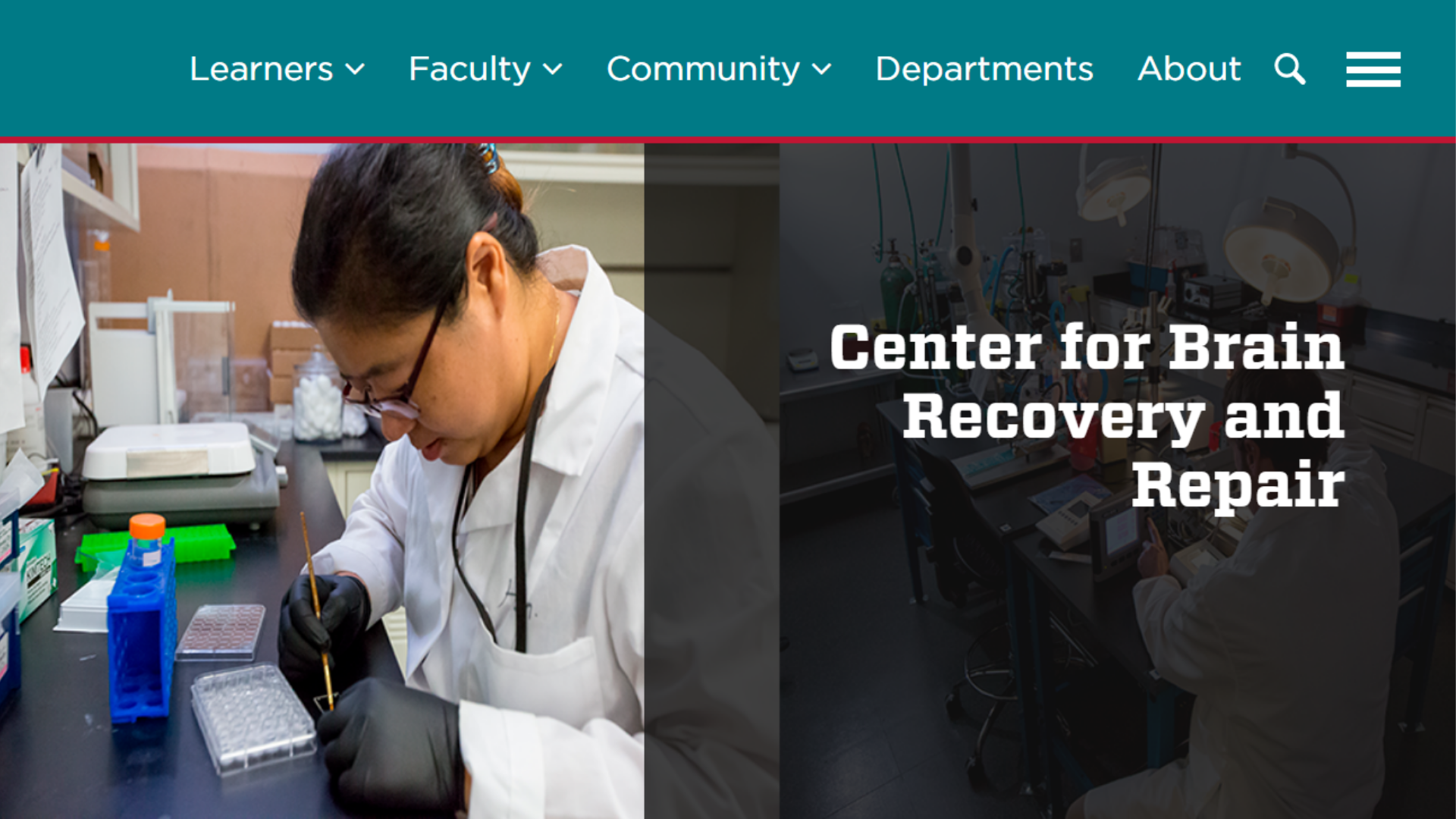Survivors of brain injuries such as stroke and trauma often endure life-long disabilities, which span a spectrum of deficits and are associated with enormous individual and societal costs. There is an urgent need to develop effective interventions that can improve cognitive and motor outcomes, especially individualized approaches that target specific disruptions of brain physiology or circuits. The Center for Brain Recovery and Repair was established in Phase I as an interdisciplinary community of investigators to address these issues. A cohort of junior faculty successfully launched new independent research programs and have remained centrally active within the Center. Together with core leadership and other established investigators from diverse departments and programs across campus, we have established a highly interactive nucleus, working closely together in a physical home in Domenici Hall. Phase II activities build on this progress, by adding additional layers of mentored faculty, projects and resources required to ensure a self-sustaining, high impact Center. The Center will maintain its successful focus on moving laboratory discoveries about brain injury mechanisms into clinical application, and will therefore continue to emphasize a structure that promotes extensive mentoring and interaction between preclinical and clinical investigators. The physical home in Domenici Hall will be enhanced, to strengthen state-of-the-art facilities for both rodent studies and clinical interventions and assessment. Recordings from brain-injured patients in the neuro intensive care unit will also be studied in our Domenici Hall core facilities in Phase II, to address novel, actionable mechanisms earlier in the progression of brain injury. Innovative combinations of electrophysiology, imaging and cognitive assessment will be led by both the clinical and preclinical cores, with extensive cross-fertilization of ideas and approaches. An exciting set of projects using these cores will be led by junior faculty from different departments, addressing different severities and consequences of traumatic brain injury. An expanded pilot program, together with new partnerships and tenure-track hires will further increase the critical mass of investigators in the Center, supporting fiscal sustainability and increasing competitiveness for center-level support with additional extramural grants. The Center will leverage existing facilities and trainings at UNM, and expand valuable collaborations with regional IDeA programs for pipeline development and resource sharing. The significantly enhanced research capabilities will thus be available for a larger constituency of brain and behavioral health investigators in New Mexico, and investigators in other IDeA states. Such outcomes are expected to have an important positive impact, as they will greatly accelerate the discovery and adoption of interventions that are urgently needed for large numbers of individuals in IDeA communities living with the devastating consequences of brain injury. The Center for Brain Recovery and Repair will strengthen its interdisciplinary team of basic science and clinical investigators, with the goal of discovery of new and effective treatments to accelerate recovery of function for stroke and traumatic brain injury survivors. The Center will continue to develop innovative new research programs, supported by intensive mentoring and state-of-the-art resources. These efforts provide a hub for brain injury research in New Mexico, and aim to ultimately benefit the large number of New Mexicans and their families living with the consequences of debilitating brain injuries.

